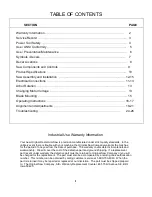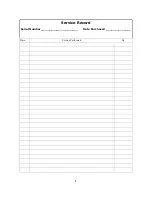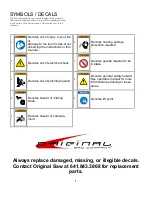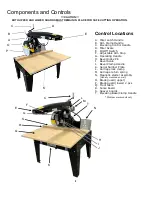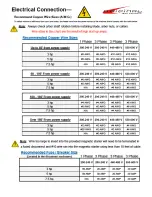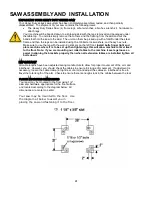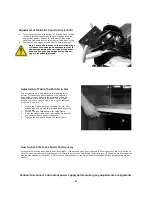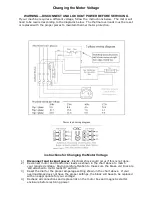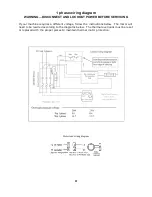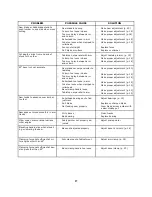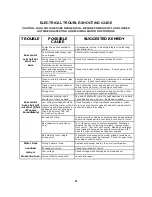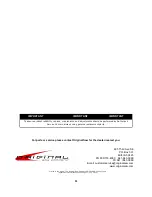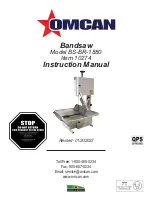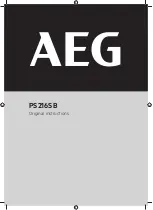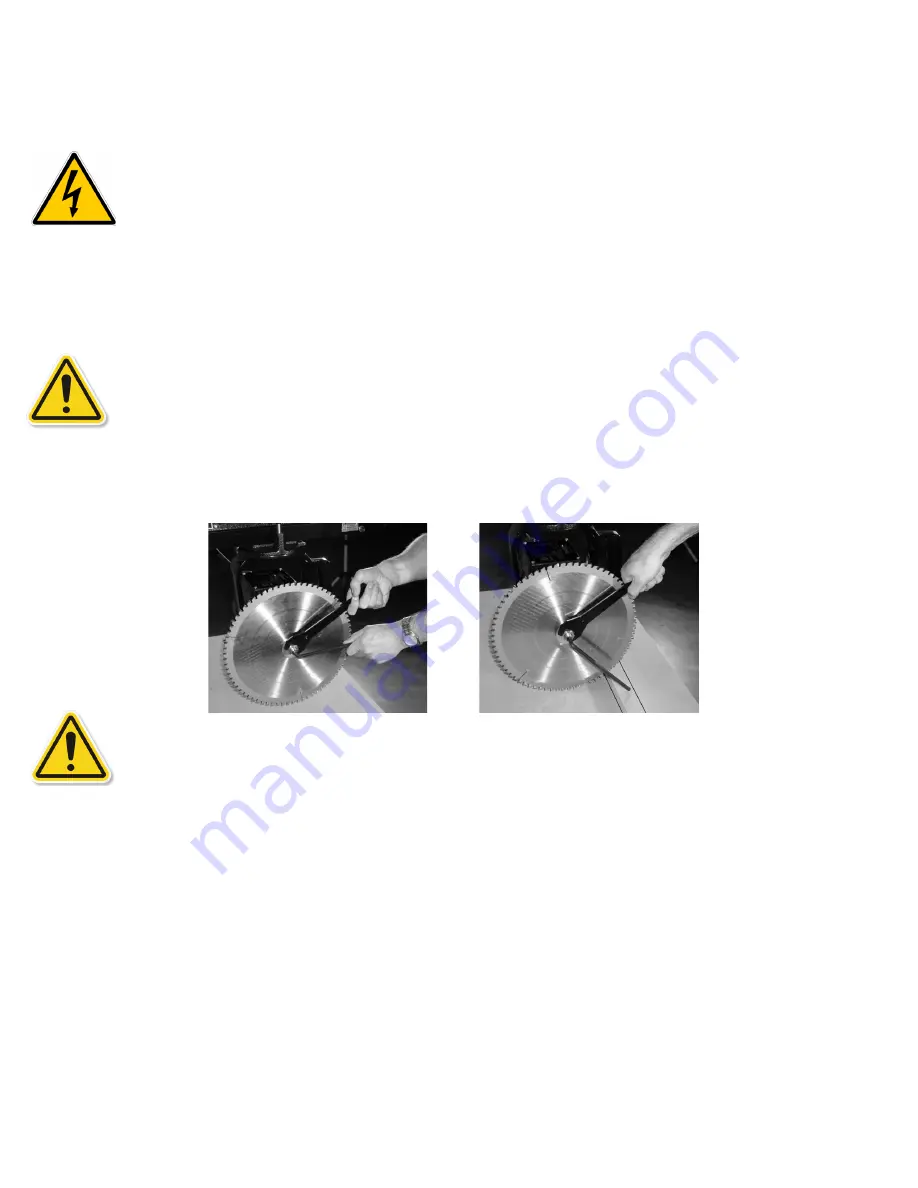
15
15
Mounting the Blade (
Caution! Disconnect power source before mounting blade)
1.
Place the hex box wrench over the arbor nut and place the long allen wrench in the arbor shaft end hole. Place a wood
striking block under the allen wrench to avoid marring the tabletop. Push down on the hex wrench to loosen nut (left hand
threaded). (See figure 2)
2.
Remove the nut and first arbor collar. Wipe the arbor collar faces and mounting area on the blade. Slide the blade on the
shaft with the directional arrow away from the motor and pointing clockwise.
3. Place the arbor collar, recessed sides against the blade, arbor nut and tighten securely. ( See figure 1)
Guard Mounting (note guard is installed when machine is shipped)
(
Caution! Disconnect/lockout power source before mounting guard)
1.
Remove the
1/4”
x 20 Hex nut or wing nut from the right front lower guard mounting stud and remove the retainer washer.
2.
Remove the right lower guard by sliding it backward and down.
3.
Place the guard over the blade, tilting the guard to the right so the HDPE lower guard sections clears the end of the arbor.
4.
Seat the die cast guard mount bracket in the groove on the front of the motor arbor end bell with the guard stud through the
hole in the guard. Secure with wing nut.
5.
Reconnect the lower right guard and replace the parts removed.
6.
Move the carriage forward across the fence to verify proper operation then pull to the limit of its travel.
Caution: Your saw is now ready to use. Before using it, study the control loca-
tions (found on page 9), cautions and operating instructions contained in the
following pages.
FIGURE 1
FIGURE 2
Adjusting the Saw Guard
The guard can be pivoted about the motor by loosening the wing nuts that connect the cast guard to the die cast guard mount
bracket.
CAUTION—DO NOT ADJUST THE GUARD WHILE BLADE IS MOVING. KEEP ALL ADJUSTING MECHANISMS
TIGHT.
SAW ASSEMBLY AND INSTALLATION
…
continued
Electrical Precautions
1.
Be sure machine is properly grounded.
2.
Do not attempt to operate saw on any voltage other than the one designated.
3.
Use correct size time delay fuses to protect incoming current.
4.
If it takes more than 3 seconds to reach maximum speed with a standard blade, turn the saw off. ( See trouble shooting on
page 26 of this manual).
5.
Do not cause the motor to repeatedly approach a stall.
6.
Do not attempt to start the saw for at least 15 minutes after thermal overload has tripped.
7.
Disconnect and lockout
the saw from the power source before opening a starter box, conduit box or whenever removing
a guard.
Summary of Contents for 3531-01
Page 11: ...11 11...


